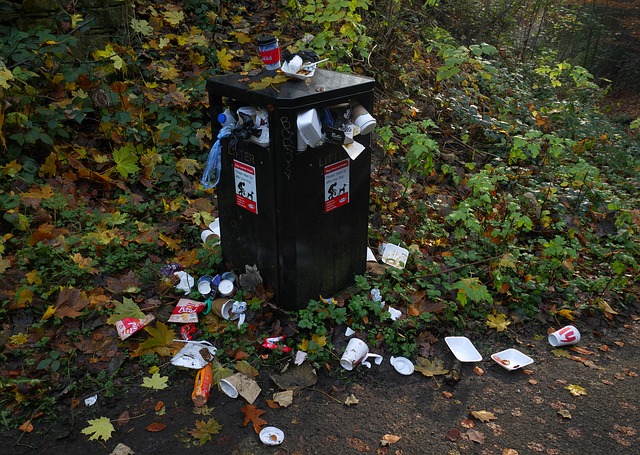Eco-tourism in Pakistan:
Tourism associated and aimed at conserving the environment from degradation while enjoying visiting a new country or place is termed as eco-tourism.
Pakistan being one of the countries with an emerging tourism industry has seen great benefits due to this. But it is also crucial to address the unacknowledged part of the environment pollution and degradation that had followed due to the tourism boost in 2020.
Problems associated due to tourism arose mainly due to the poor infrastructure and development in the areas.
Also read: Domestic Tourism in Pakistan – Positive and Negative Impacts

You might also like to read: Digitalizing Tourism Industry in Pakistan – Trends, Challenges and Recommendations
Importance of Tourism Industry in Pakistan:
Tourism industry is crucial for Pakistan as it helps keeps the local economy afloat even when the national economy is not doing so well. Amidst inflation and other problems, the regions that see great influxes of tourists over the year can still manage to earn and live comfortably enough to sustain their families. Hence, developing this industry, improving its systems and providing proper facilities in these regions can make it even more financially suitable.
Plastic pollution due to single use plastics , disposable cutlery, plastic bottles etc. are the most common site to see in places visited by tourists who leave their trash behind. Pakistan’s tourism industry has a great potential to contribute significantly to the national and local economy but it first needs to be made sustainable and eco-firebdly in order to reap long term benefits whole preserving the nature.
Related: Plastic Crisis: An Emerging Threat to Mountain Ecosystem
Also see, How Pakistan Is Handling Plastic Waste and Pollution?
How can this Industry be made Eco-friendly?
Some suggestions to how this industry can be made more sustainable are given below:
- Imposing fines: first of all to tackle the main and chronic problem of tourism is to impose fines on those who litter. Implementation of the polluter pays principle has done wonders for regions across the world such as he US, Japan, China or Saudi Arabia to name a few examples where polluters are immediately fined for destroying the aesthetic beauty of the place. This also makes the tourists respectful and conscious of their actions since they’d have to pay the cost of their actions sooner or later in most cases.
- Eco-lodging: making environmental friendly staying places for tourists such as in log cabins designed from old/mature trees on degrades land that cannot be restored to its original form and purpose. Land that is otherwise useless and bare can be utilized in creative ways such as by forming a camping or tents to provide a unique experience with energy efficient lighting, sustainable use of fuel for domestic cooking etc. Old trees that are weak and pose a danger to human safety and life in events such as during windstorms etc. can be used to make these resorts or lodges.
- Agro-tourism: encouraging and providing tourists with an opportunity to go to rural farms and see the processes, methods used and experience the local farming practices. It can further be set up in a way that can allow them to cook their meals and enjoy them using food from the land. This will also allow mutual respect to develop and a first hand experience of local lifestyle with minimal harm to the environment.
- Allow for home-stay opportunities: this would be cheaper instead of hotels that are overpriced and consume a lot of electricity and are generally not water efficient. There is also a high chance of hotels being built on floodplains and flood-prone areas or other inappropriately designed and selected sites.
- Avoid private transport and opt for local means of traveling for a unique experience. Public transport should be improved on by the government to encourage people to choose that over their individual transport. This will help reduce the carbon footprint. If private transport needs to be used then a carbon price can be charged for that in especially sensitive areas where biodiversity can be effected by GHG emissions in the atmosphere.
- Sporting activities among locals and tourists for appreciating their culture and getting to know them first hand. This will also allow the sport to grow and be renowned internationally and nationally when it would have been previously unknown.
- High Value, Low Impact Approach: Where government charges a high amount of money from each individual traveler to control the tourist population meanwhile preserving the natural landscape and resources efficiently.
Also check out: Environmental Damage Due to Tourism Industry of Pakistan
CONCLUSION:
The three pillars of eco-tourism include economic development, social justice and environmental integrity. It calls for high value and low impact approach to tourism. One another way to secure long term benefits typically involves investment by the government first which then results in a system and model on which tourism industry can effectively be built upon. If such approaches are adopted by Pakistan it will be beneficial for the country long term.
Also check out, 7 Must See Beautiful Natural Phenomena in Pakistan
We hope you liked this post! Please comment below if you have any suggestions, comments or feedback! We at #envpk love hearing from readers! Thanks




